Being immersed in the fitness industry provides me with a ton of different opportunities to experience different techniques, methodologies, and products. I recently had the privilege of a...
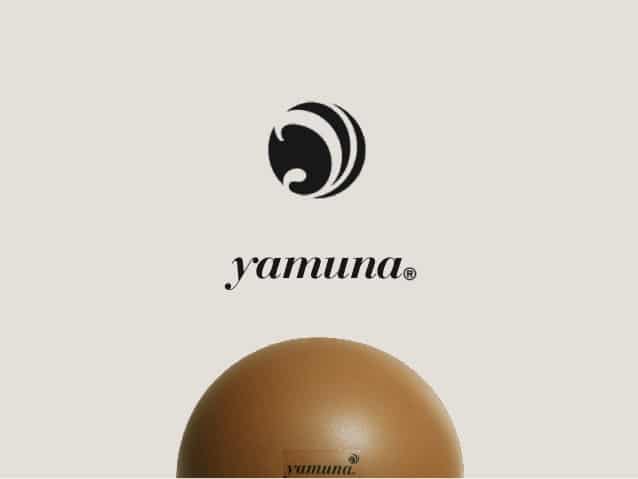

Being immersed in the fitness industry provides me with a ton of different opportunities to experience different techniques, methodologies, and products. I recently had the privilege of a...
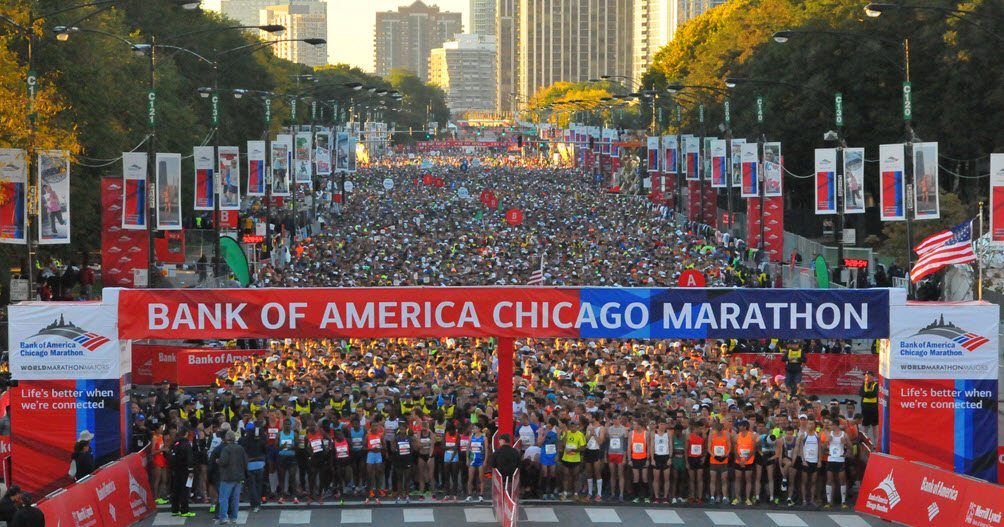
Leading up to the Chicago Marathon 2016 The Chicago Marathon provides an excellent course, plenty of support and, for me, a chance to visit home for a few days. It was no different for me this...
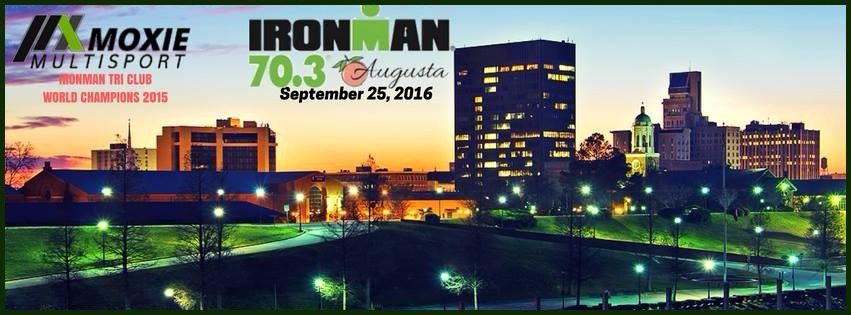
September 25 was going to be my day. The Ironman Augusta 70.3 triathlon was finally here. The race I had been training so hard for on one of my favorite courses. It was four-and-a-half months...
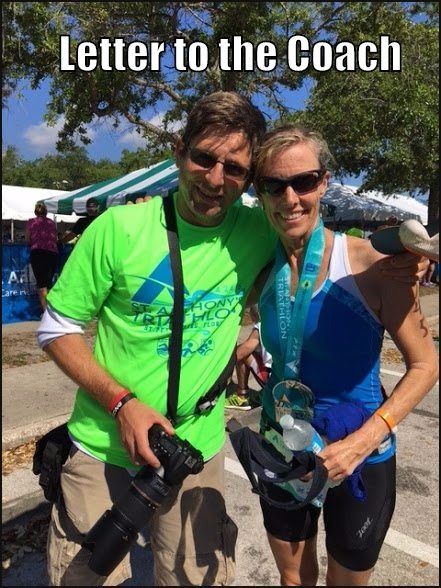
I have been an endurance coach for some time now. Once in a while, I receive an email from a client which chokes me up with pride. Today, I received one of those letters, so instead of sharing it...
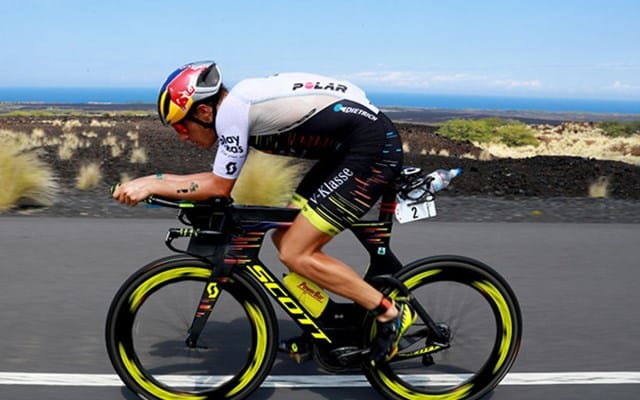
I found when looking for ways to get faster on the bike, is that there is so much information, from different coaches and experts, that it can be confusing and overwhelming. Personally, I...
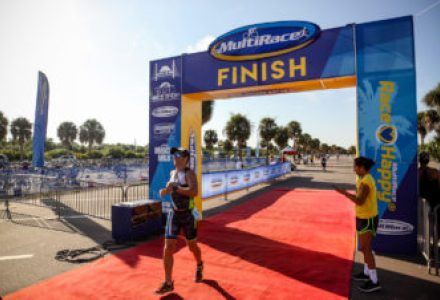
The previous post was a review of the FD3 Triathlon Series as if it was a product. Below you will find a more detailed account of my personal experiences during the race. Let me know in the...

It has been a while, and I have a ton of ideas that I am anxiously awaiting to share with you. Unfortunately, time has been getting away from me. Between training myself, a full-time job and being at capacity with 15 individual clients I am struggling for time to post. I promise I will figure out a way to make time. I am so lucky to have such great people to bounce ideas off of, that sometimes, by not posting, I feel like I am letting all of you down, so I promise to post more even if the posts end up being a lot shorter than usual. (Which the length is probably not your favorite part of it anyway. I know I ramble.)
Before I get into the nitty-gritty of my personal opinion of compression, a disclaimer.
I am not a medical professional. The opinions that are shared on this post come from research, my own experiences and the experiences of athletes I have personally witnessed and information I have researched. Every athlete/person has a different body and some products and/or methodologies may be advantageous for some and may even be dangerous for others. This post deals with my beliefs and my research. (Was that clear?)
Lately, most of the questions from other athletes, including clients of mine, have asked about compression. This usually centers around calf sleeves, but does include some of the other compression apparel as well. My answer is usually, for recovery and for temporary use they are great, but not for training. Why? Great question.
I am going to use calf sleeves as my example.

While running, biking, swimming or any major activity using the legs, the muscles are constantly in motion. That motion is what naturally makes the muscles stronger. The muscle moves and is loaded with either more repetitions, or with weight. The full range of motion of each muscle is imperative to the strengthening of the muscle. Compression holds that muscle in place and limits the movement therefore limiting the range of motion. While compressed the muscle cannot fully develop while training. Let’s take a look at the anatomy of the lower leg in the running position.


As you can see the gastrocnemius muscle and Achilles tendon, when the knee is flexed, both constrict and then elongate when the knee straightens. Here is the epitome of the range of motion naturally occurring when running. The more flexion and constriction that take place the more they are stretched causing the breakdown of the fibers. After the recovery period the fibers wrap tighter and in more abundance aiding in a strength and endurance. Now imagine that gastrocnemius muscle remaining constricted due to a calf sleeve. It seems to me that this would dictate that it would not have full range of motion also causing the Achilles tendon to remain stretched without the full ability to absorb the impact. This could unintentionally damage the Achilles tendon, the gastronemius muscle and the soleus muscle. If not damage, it will limit the ability to be strengthened. This is why I personally do not recommend calf sleeves during training workouts.
Recovery
I do however do not mind wearing compression while in recovery to include immediately following the cool down of a workout. I mentioned the healing of the fibers earlier. In order for the fibers to heal and become stronger after the breakdown, blood must be pumped through the muscle and with it water for hydration. Compression does help to isolate that area helping to keep the majority of the blood and water being pumped through the body to the point of the compression. With the legs either elevated or even walking around and at that point limiting the movement, it would allow for the blood to pool in that area helping to re-hydrate the muscle thereby helping to heal faster. In turn, an occasional training run or race, with compression at the tail end of an injury, might also benefit, but in a very limited quantity, and duration.
–IronGoof
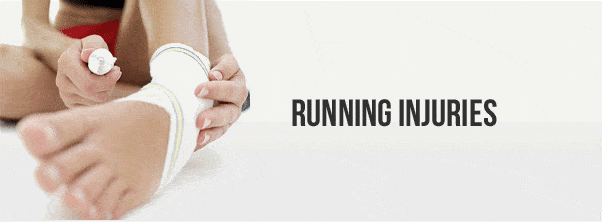
I believe I have started to write this post on injuries, a number of times, trying to be as clear as possible without seeming conceited or that the information I am giving is absolute. That being said I am giving this disclaimer:
The information in this post comes from experience, my personal research and conversations with Physical Therapists, Bio-mechanical experts, Orthopedists and other athletes. I am not a physician or medical expert, so please take this information as opinion based on cognitive research. Also, there is an exception to every rule and another explanation. I do welcome comments that give constructive criticism, but I make mention to this disclaimer first.
You might be surprised to hear that there are only two reasons runners (and other athletes) get injured; accidents and imbalance. Accidents are obvious right? For example; rolling the 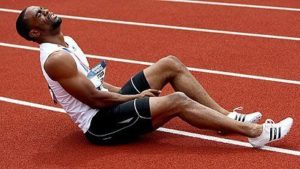 ankle stepping off a curb, falling, being hit by a bicycle, etc.
ankle stepping off a curb, falling, being hit by a bicycle, etc.
Imbalance will cover the why’s of the rest of the injuries. The human body is designed for every system to work in synergy, therefore when one piece of the puzzle is not operating a full capacity or efficiently, the other systems have to do more work. This is when the imbalance occurs.
When talking with Physical Therapists and Bio-mechanical experts I was shocked at some of the stories I heard. One story I heard was of a football player who was training, running 100s up and down the field carrying a ball. He had extended his shoulder just barely beyond its usual range of motion, and he ended up with severe pain in his opposite quadricep. “What?!!!!” was my initial reaction, however, I was then educated on the connective tissue (ligaments, tendons etc) which can be traced from the very top of our skull, down through our torso and into the extremities. Everything is connected.
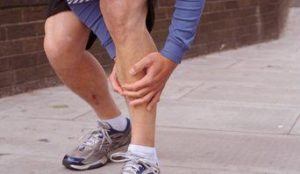
As another example, one of the most popular injuries for newer runners are the dreaded shin splints or medial tibial stress syndrome (MTSS).
Scientifically it is caused tiny micro tears of the fibers connecting the medial soleus fascia through the periosteum of the tibia where it inserts into the bone. Due to the soleus becoming so week that the constriction starts to bow the tibia. In more layman’s terms, the calf becomes so tight due to weakness and inflexibility, that the connective tissue pulls on the bone. (There is some physiological proof and complaints that more runners are getting shin splints and other injuries due to training in calf sleeves and other compression gear, but I will address this in another post.)
This same weakness, fatigue in the calf muscle can also cause another popular injury. Plantar Faciitis. In this case, instead of the connective tissue weakening through to the soleus is pulls on the plantar fascia causing inflammation which can be debilitating.
An injury can be traced either by the athlete themselves or by a professional to a point of imbalance. Most likely somewhere within the full spectrum of the athletes, body, behavior and, do I dear say it, attitude.
As a coach and trainer, my first rule, and one that I increasingly live by, is “Do no harm.” Therefore, I am always asking questions starting at a high level and continuing to get more specific. (The examples below are catered more toward running, but can be used in any sport.)
There are definitely more questions I ask, however, I think these examples give a good idea of why balance is so important.
The term “overuse” is being used quite a bit, but what is it? It’s an imbalance of planning or lacking thereof. Tracing Injuries is completed from the highest level which would be the training plan, all the way down to the balance of strength and flexibility within the connective tissue of the body. Personally, I think it is amazing that on one hand our bodies can endure a lot, but if we don’t notice those little weaknesses, it will create an imbalance that could cause and injury that may or may not keep us from doing what we love most.
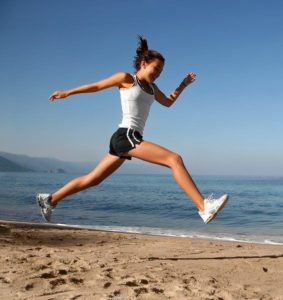
Balanced Plan -> Period -> Weeks -> Workouts -> Balanced Form -> Body -> Mind

As stated in web-ease “O-M-G!” I have so much information to share It is hard to think about anything else. Unfortunately, I started on a new contract a couple of months ago and now that I am fully immersed in it, my days are becoming hectic. Not only that but I have my own training, coaching clients and getting ready for the CPT test this month, so needless to say hectic is the only word to describe my activities right now.
Have you noticed the new change to IronGoof.com? I have moved away from a complete blog site to a more of a Coaching Site. I hope you like the new looks. Please feel free to explore and send some feedback on the changes. It will continue to be a work in progress, so any and all honest comments on the site are very welcome and encouraged.
Coming up over the next weekend or so I am going to be sharing news about past events and the latest going’s on.
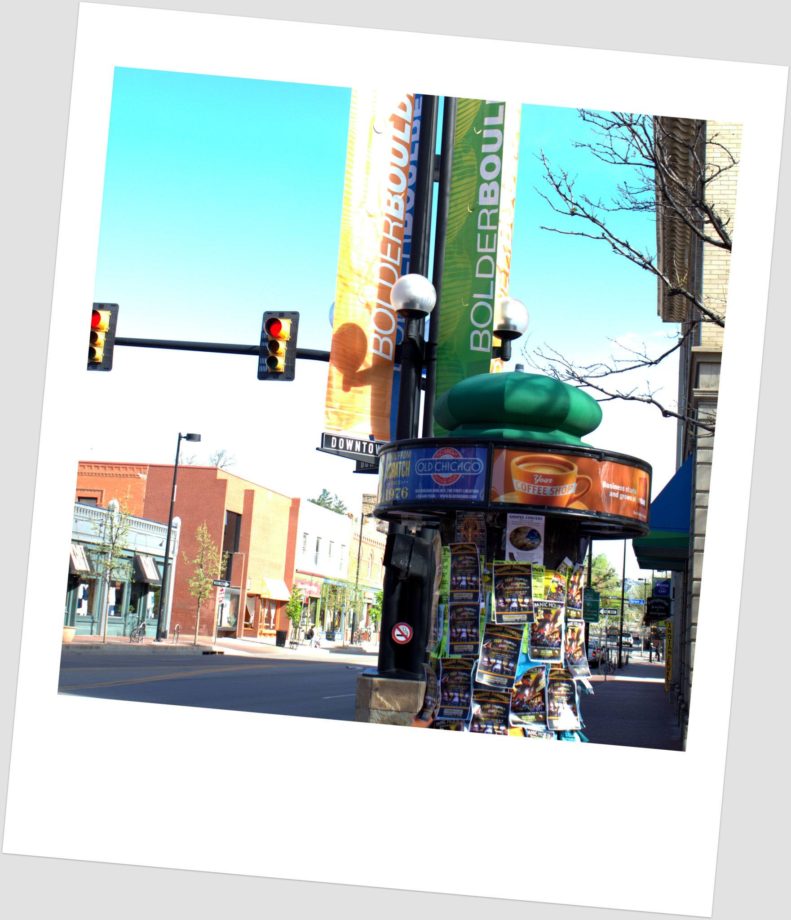 I just returned back from Boulder, Colorado where I spent five amazing days working some of the top running coaches on form and performance. The Newton Running Lab hosted certification training for RRCA, Newton and Lydiard. The content included proper running form with drills, strength exercises, injury prevention, injury management and transition plans. While I was intrigued with the Newton Coaching formula, I was excited that a portion of it mimicked my own. The only part that my personal coaching methodology added was the intricacies of making the running form personal to each person. Newton believes proper running mechanics are the same for everyone, and with the hundreds of hours I spent learning my own body I know this isn’t true, but it is a good place to start.
I just returned back from Boulder, Colorado where I spent five amazing days working some of the top running coaches on form and performance. The Newton Running Lab hosted certification training for RRCA, Newton and Lydiard. The content included proper running form with drills, strength exercises, injury prevention, injury management and transition plans. While I was intrigued with the Newton Coaching formula, I was excited that a portion of it mimicked my own. The only part that my personal coaching methodology added was the intricacies of making the running form personal to each person. Newton believes proper running mechanics are the same for everyone, and with the hundreds of hours I spent learning my own body I know this isn’t true, but it is a good place to start.
The Lydiard Certification training was the best part. Arthur Lydiard was a New Zealand running coach that coached many Olympians to medals including gold in the 1500 meters and beyond. He later mentored other coaches to a point where he is actually considered “The Coach of Coaches of Champions.” Obviously, this resonated with me because Arthur himself was not a competitor, but he coached more champion runners than any other coach to this day. As I really do not compete with anyone other than myself for PRs, this validated my feelings on coaching and my passion for it. As this is a coaching method, not a form method, it also validated a lot of what I already incorporate, but I also enhanced my knowledge greatly.
It was taught by Lorraine Moller who herself was a three time Olympian to include racing in the first 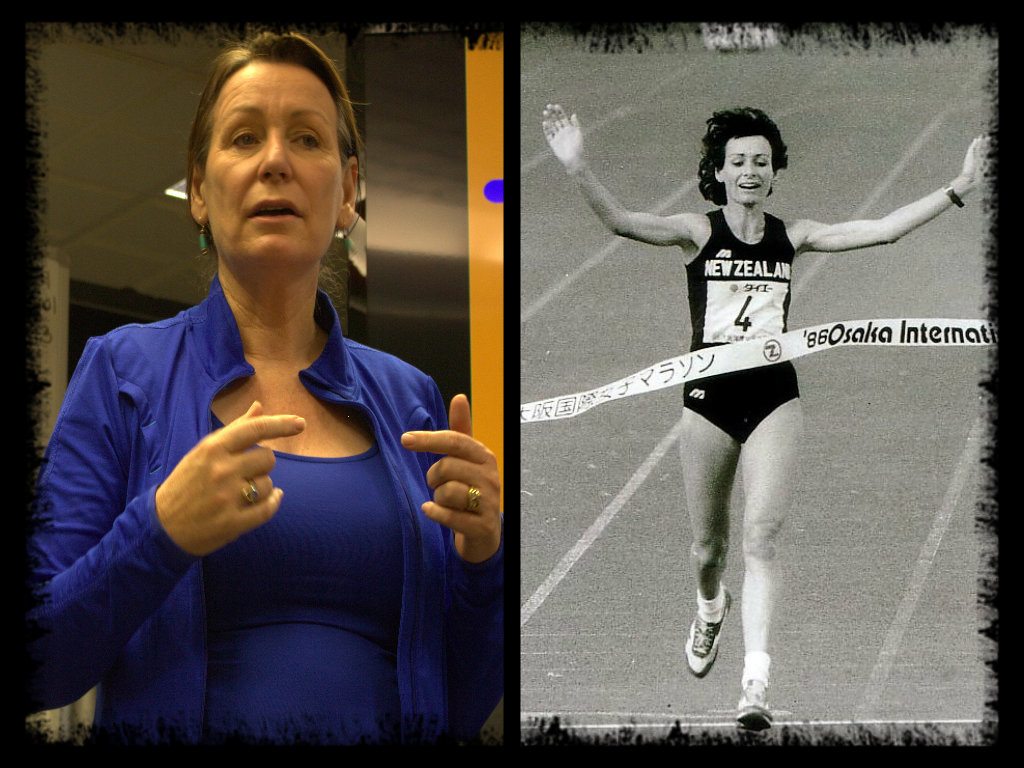 ever Olympic Women’s Marathon in 1984 where she took 5th. She did won bronze in 1992 at the Barcelona games in the Women’s Marathon. Her credits also include winning Grandma’s Marathon three times, the Boston Marathon, the Osaka Ladies Marathon twice, the Hokkaido Marathon twice, and second in the Commonwealth Games. She was coached by John Davies who was mentored by Arthur Lydiard. Lorraine herself was followed by Arthur and would consistently give her pep talks before competition. She is an amazing speaker and completely passionate about running and the Lydiard Coaching method as well as the founder and president of the Lydiard Foundation. I was extremely lucky to have someone as accomplished as she is as an instructor for the class.
ever Olympic Women’s Marathon in 1984 where she took 5th. She did won bronze in 1992 at the Barcelona games in the Women’s Marathon. Her credits also include winning Grandma’s Marathon three times, the Boston Marathon, the Osaka Ladies Marathon twice, the Hokkaido Marathon twice, and second in the Commonwealth Games. She was coached by John Davies who was mentored by Arthur Lydiard. Lorraine herself was followed by Arthur and would consistently give her pep talks before competition. She is an amazing speaker and completely passionate about running and the Lydiard Coaching method as well as the founder and president of the Lydiard Foundation. I was extremely lucky to have someone as accomplished as she is as an instructor for the class.
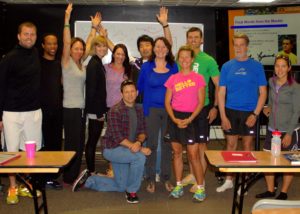
The class was kept fairly small in order to provide us with a lot of individual instruction. We went through analysis of our own form using video which was really interesting. I know that my form isn’t perfect, but my mechanics are good. I found that I actually do not lift my knees as much as I should, and when I applied it later the form became even easier. I learned a lot and I hope to attend the level 3 class later in the year.
Boulder as a city was awesome!!! The scenery was amazing as it was surrounded by mountains and the culture really resonated with me. Boulder’s environment seems to revolve around two things, athletics and the arts. Which are my two passions, so this city really got under my skin. Everywhere you go, everyone is traveling on bicycles and avid cyclists and triathletes are training. Pearl Street is filled with small businesses, to include, coffee shops, restaurants and bars, and none of them are chains. You cannot find a McDonald’s or Wal-Mart anywhere the residents won’t allow it which is great. The quad-like feeling of this outdoor “mall” for lack of a better term, is filled with musicians playing and practicing, photographers, writers, and artists. It gives the feel of a old small town but with the University of Colorado in the midst, it also brings in a younger element that increases the energy of the area. The weather started the day in the high 50s and increased to the mid 80s and then ended in the high 60s. There is almost no humidity, so the air smells fresh and clean. Since most people utilize people-powered transportation it feels as though exhaust fumes do not even exist. I just fell in-love with Boulder and Colorado. I am not quite sure I ever want to live in a place with winter months, but if I did, I definitely would consider Colorado and Boulder.
My plan is to sit and complete the few posts I have started this weekend to bring you the following:
That should keep me busy for a while. Have an amazing week! Live with Passion.
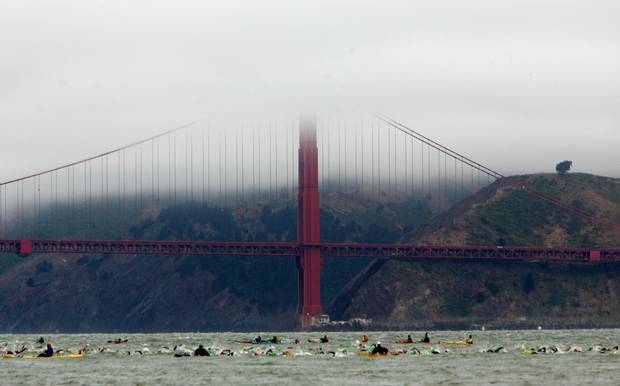
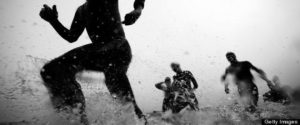 triathlon. Deaths have been on the increase in triathlons and the vast majority of them occurring during the open water swim leg. This post is not intended to scare into never swimming in open water or ever competing in triathlons, but provide information about the precautions to prevent these types of accidents from occurring.
triathlon. Deaths have been on the increase in triathlons and the vast majority of them occurring during the open water swim leg. This post is not intended to scare into never swimming in open water or ever competing in triathlons, but provide information about the precautions to prevent these types of accidents from occurring. experience swimming in it to understand its somewhat constricting feel. Even a few laps in the pool helps.
experience swimming in it to understand its somewhat constricting feel. Even a few laps in the pool helps.
Since I have been an endurance athlete in the Tampa Bay Area for a few years, I have always felt a pull toward the Gasparilla Distance Classic. This last weekend was no different. I had the intention of possibly hanging out on the sidelines this year, but the attraction of the race and the fact that all of my racing “peeps” would be there, lured me to enter the Becks Light Challenge which consisted of the 15K, the 5k and the ever loved Half Marathon. There is another level to the challenges named the Michelob Ultra Challenge which includes all of the races in Becks Light Challenge plus the 8k, but I know myself well enough that after a half marathon the last thing I was going to want to do was run another 5 miles so I decided against it this year. Maybe next year.
The Expo
The expo was pretty much the same as it always is. I enjoy being around it, and seeing my fellow running buddies, getting some samples, seeing the new shoes that are out and tasting the new products. Unfortunately, I was a little late this year, so I didn’t have the allotted time I would usually, but I did spend some time with Pearl Izumi rep, Kyle, and tried on their new product, The E:Motion Tri. Kyle mentioned it had only been available for five days at that point and after a little schmoozing I think I may have finagled a pair, of which I will review at a different time.
The race included over 27,000 entries this year, and with muli-race entries the estimates stated there were about 23,000 unique entries, which I consider to be an amazing turnout. I was pretty excited to be participating the next day, however I let the energy of the social part of running get the better of me and I did not eat very well that day or that night. I ended up paying for it the next day.
The 15K
I woke up at 4:30a and took care of morning routines and ate a banana with almond butter which is usually all I need for a workout that is only 9.3 miles. Jumped in the car and headed off to the race. I found a nice spot, behind Publix and since they were sponsoring the event I didn’t think they would mind. It was a nice little hike to the start line from there, so it was perfect to warm-up and get the blood moving. I had plenty of time, so I hung with Dawn Peters, and saw a few others in the corrals while I was continuing to warm up a more thoroughly. Peculiar thing I didn’t mention earlier. In Tampa, there was a power outage in the water treatment plant because a squirrel chewed through the lines. This caused a water distress warning for all of the areas that received their water from the City of Tampa for 72 hours. We were told to drink bottled water or boil our water before drinking it. The announcer was assuring us, the water served was bottled from Zepherhills and the mixed Gatorade also used the bottled water. I caught myself wondering how much of the water, I used to brush my teeth with, made it into my system.
There was a great rendition of our national anthem sung acapella followed by the blast of the start horn.
I started feeling really good and I was charging hard at about 7:31 pace as I hit miles 1, 2 and 3. My legs were fine, my breath was under control and I just kept saying to myself; “Self, you know you have another 5k you have to do today followed by a half-marathon tomorrow don’t you?”, but the energy of the race ran away with me (pardon the pun).
At mile 4 I started to slow down and at mile 5 my whole race fell apart. Here I was, on my own training ground, turning the corner and heading for home, and I felt dizzy, my legs were not feeling great, and I was slowing to a crawl. I walked for a bit, trying to clear the toxins the lactic acid was ridding my muscles of, and motivate myself to finish this thing. I couldn’t believe I was falling apart this early. Just two weeks prior I slowed but at the 9 mile mark, so I thought I would at least be able to get through this race and shuffle through the 5k, but here I was at mile 5 and completely crashing. I kept saying to myself “The mind will quit 10 times before the body does. This is not your body, you goof, this is your mind.” I started again, with the expectation to keep running no matter how slow and just finish. Athletes, that I run with at track that are in groups below me started to pass. My friend Rich, whom has been just lifting and bulking up past me with a motivational pat on the shoulder. I couldn’t believe this was happening. I checked my posture, looked at my placement, leaned into a comfortable position and picked up my cadence, allowing for maximum efficiency and pushed on with everything I had left. At the 9 mile mark, as is tradition, I put everything I had in the last third-of-a-mile and sprinted across the line. I literally felt like I had nothing left.
I took pictures with the pretty pirates and was lucky enough to see a few of my clients whom were running the 5k about an hour later. I was so drained I was seriously contemplating just cutting out of the 5k altogether, but that little jingle went off in my head. It actually used to be an old Hefty Bag commercial that started with a little squeaky infantile voice; “Wimpy, Wimpy Wimpy.” Of course the actual commercial continues with a loud, strong, low and bold voice; “Hefty Hefty Hefty!”, but that part was missing in my head. I decided that 3 miles was not a big deal as long as I can get some fuel up a little, so I journeyed on to find some food.
This was the only disappointing portion of the Gasparilla Distance Weekend. Every other year I have participated in this race the vendors are lined up in the tunnel with fruit, beverages, smoothies, rice and beans, sandwiches bagels the works, but this year it was cut to bananas, fruit cups, granola bars and sample smoothies. I was a little disappointed, but I ate a couple of bananas, gulped a couple of smoothies, headed back to the start line.
The 5k
As my readers know, I am not the fastest runner by any means, but usually fast enough to be in the front corral. This year because I really wasn’t feeling it, I put myself in the middle of the front corral. What I didn’t realize, was because there were only two corrals, the 9am and the 9:45a, there were a lot more people. After another rendition of our national anthem, which was just as good as earlier, the horn blew and we were off. Again. Or, so it seemed because even though I crossed over the start mat I was still walking. 19,000 runners in-between the two corrals, and here I was in the middle of the first one. After 400 meters I heard the announcer mention that five minutes had gone by since the start. I heard my own voice cry out, “What? Five minutes? Already?” Embarrassingly enough, I was talking to myself. I started weaving through the crowd the best I could and finally around the half way point it opened up enough to get some speed going. I was still spent, but the food I consumed filled my glycogen levels enough to finish the race. My time was a dismal 26 minutes and change, but I was happy I did it.
After the race- Saturday
After completing the ritualistic medal photos, walking, stretching, and chatting I caught up with Rich O’Dea and we headed to Four Green Fields for a couple of beers. Everyone I knew was there, so the place was hoppin’. The Tues-Thursday Starbucks run peeps were there, Progressive Run, Four Green Fields, A-Train, Shark runners, and of course Mrs. Jessica Glover behind the bar on deck. She was incredibly busy but smiling and gabbing away. I chatted for a while, met some new runners, saw some old friends like Malynn Nguyen who I haven’t seen since the 2011 Ironman, and just basically hung out and had a great time. It was a nice ending to a couple of difficult races for me.
I realized that I in no way was I talking myself out of running the Half Marathon the next day, so I devised a strategy on the way home. I needed a way to fuel and feel as fresh as possible, so I stopped on the way home and grabbed a couple of bags of ice. What for? An ice bath. I never actually indulged in an ice bath, but I have read over and over the advantages to them, one of them being rapid recovery and that, is what I needed in order to get through the next day. When I arrived home I grabbed a Coke, which would help top off my glycogen levels, ate some chicken breast and broccoli, and headed for my ice bath. Since I never actually took one of these before I knew that it would be torture if I just filled the tub with ice and water and jumped in, so I ran some barely luke warm water and got in. Slowly, I moved the water to cold and it rose above my legs and found myself getting used to the temperature. I then slowly started adding ice, and the temperature started to drop a little more rapidly, but not so much where it became too uncomfortable. I dropped the last bag of ice in and waited my 20 minutes. I have to say, it wasn’t that bad, since I allowed my body to acclimate. I am not saying it was comfortable, the ice remained frozen after all, and it was touching my skin, but I could handle it. After 20 minutes I jumped out and into a hot shower which was absolute heaven. I assessed how I felt and noticed that my legs felt somewhat rejuvenated but the test would be the next day, both waking up and running the half marathon.
The Half Marathon
I woke up the next morning and was feeling pretty good. My legs were a little tight, but not bad. I cleaned up a bit, donned my new IronGoof racing singlet and headed out to Jet City to meet up with Jessica, Cheryl, Carol and Tara Lee. That was a nice way to start the morning. Jessica, made us triple espressos and we headed to the start line, for the last time. We made a quick stop at the Team RWB tent to pick up some more runners and take some pictures.
Team RWB is one of my favorite Veteran charities. Being a Veteran myself and an ambassador, I am connected with their cause to help veterans with “invisible” injuries incorporate themselves back into civilian life through athletic endeavors. Invisible injuries would be, Post Traumatic Stress Disorder(PTSD), biological-chemical treated injuries, Combat Stress, and other psychological and physiological issues and disorders. As I was there, I understand more than the average person how critical this cause is, because for every injury and casualty of war there are over 25 invisible injuries affecting Soldiers, Sailors, Airmen, Marines, Coast Guard, and DOD contractors.
We lined up with the rest of the pack for the Half Marathon, listened to a repeated acapella version of the Star Spangled Banner, and after the horn went off for the last time for me, we started shuffling to the start line. As with the 5k, there were a huge amount of runners for this race, so it took a while to find a way to break free. The first mile was around eleven minutes, because we had to stop twice due to the foot traffic moving towards Davis Island. The second mile was not much better at around 10 minutes, but the third is where it started to spread out a little at the end which ended up pacing around a 9:30 minute per mile. I was already way way behind schedule to even come close to the time I completed a couple of weeks earlier at the Rock n’ Roll half marathon. Once I was able to move, I did so, and sped through miles 4 – 8 between 7:30 and 8 minute miles. I felt absurdly confident and noticed the difference in my energy level since I made sure to fuel the night before, more adequately. Unfortunately, the tole I took on my body the prior day, decided to rare it’s ugly head as I passed the mile 9 marker.
All of the sudden my legs felt heavy, my breathing became more labored and even though I was adamant about my nutrition during the course, I slowed to a pace just above a 10 minute mile. I couldn’t believe it as my watch started alerting me after each of the last few miles. When i finally reached the finish line with nothing left, I was just hopeful that I was under two hours or my ego was going to take a huge blow. As I stumbled through the medal line, grabbed some water and Gatorade, I checked my Garmin’s history for my unofficial time. 1:59:17. My slowest non-triathlon half marathon in two years.
The after race activities included pictures in the VIP tent with members of the Brandon Running Association to include lovelies; Beth “B.o.B.” Shaw, Fallon “News Channel 8 Morning Anchor Hottie” Siilcox and Patricia ” Bring my own changing tent” Rossi, good friends; Ben “The Lazy Runner” Mena, Nick “Best Damn Race” Zivolich, Tim “You will never look this good” Schubert, and Chris “You can’t touch this” Wiegner. Of course there were others I cannot remember due to the fact the blood was not pooling in my brain at the time. After I chatted, drank and posed, I left for Jet City where I continued my socializing over fresh Mimosa’s made with love by Jessica.
As I drove home I reviewed the race and what the heck happened to make it so rough. I do not like excuses, so the fact that I am a little older, it was humid or the course was boring are not ideas I choose to partake in, but problems I personally created I can learn from.
My intentions to address these mistakes are:
How were your races and/or workouts this weekend?
Carpe Viam!